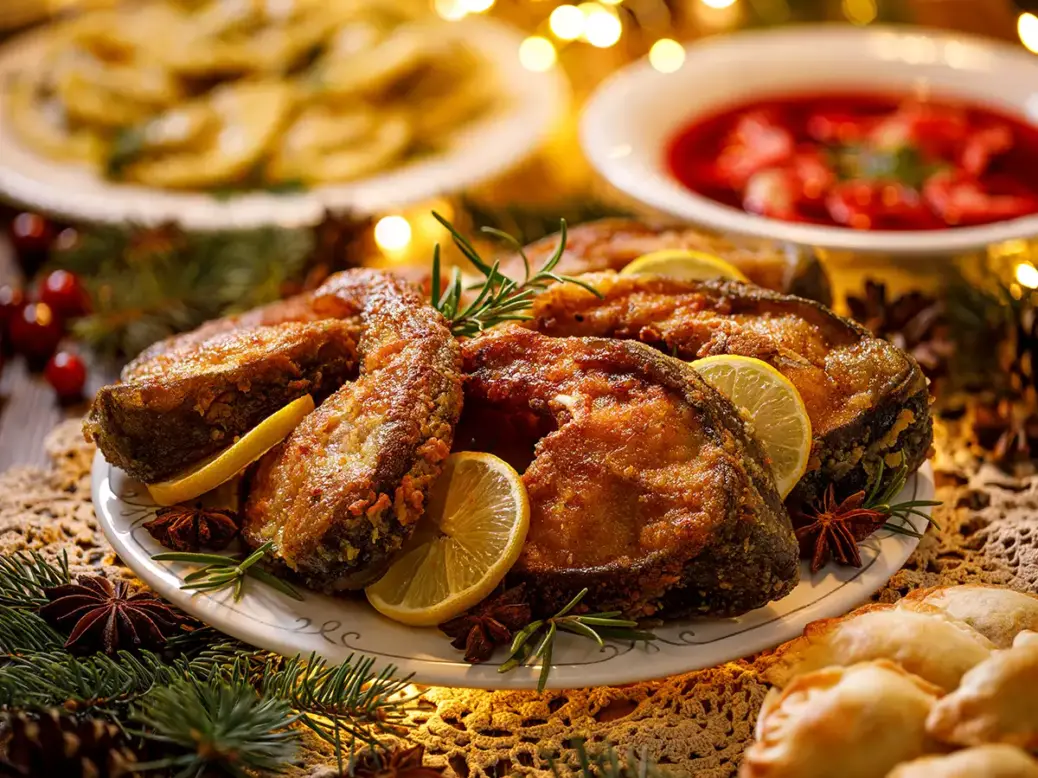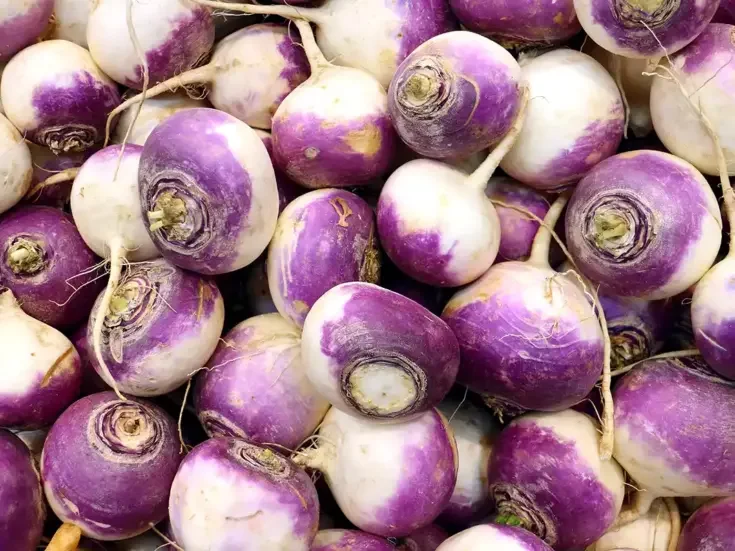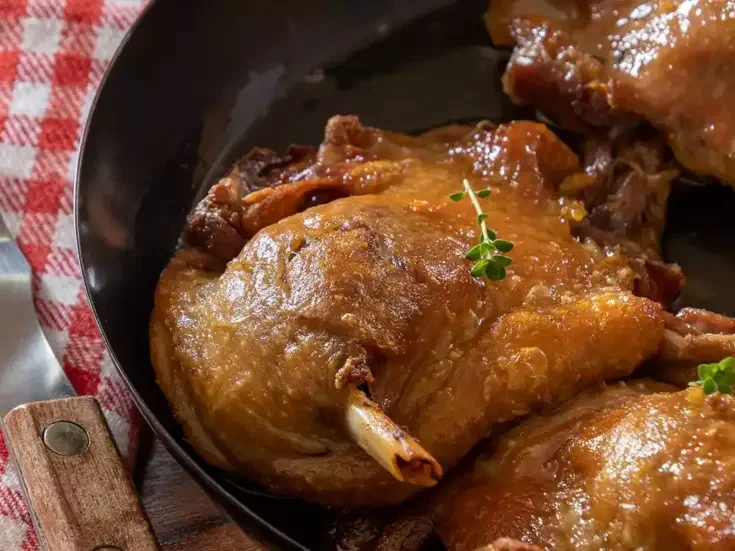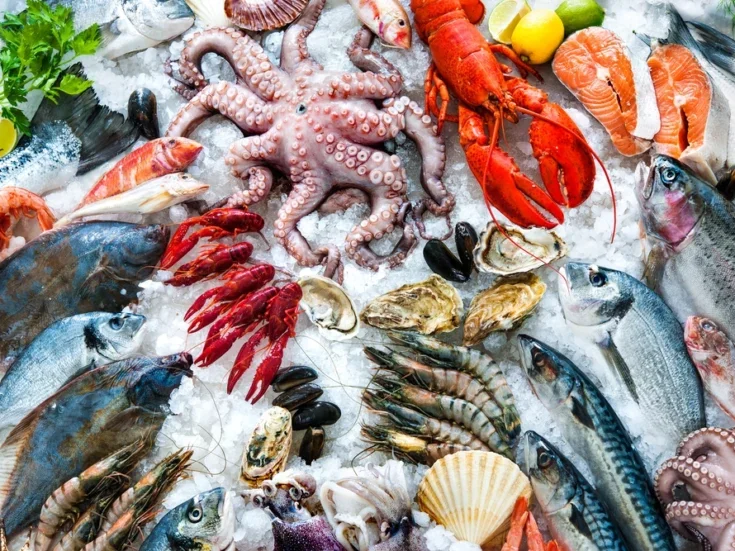
The tradition of keeping the centerpiece of the all-important Christmas Eve dinner swimming about in the bath for a couple of days before it meets its inevitable end has declined, but there will still be households in central Europe where the presence of a carp means the bathtub can’t be used for its usual purpose in the immediate run-up to Christmas. If adults can understand why habits have changed—someone has to kill the thing, usually by chopping its head off – children do not always. They often named the fish and treated it as a short-stay, seasonal pet.
People may now prefer to buy carp cleaned and gutted at a fishmonger or a December pop-up stall, but the tradition of feasting on carp on December 24 strides on. Perhaps it isn’t quite as universal as it once was, as newer generations drift to fish such as salmon, but it is still very widely eaten, above all in the Czech Republic, Slovakia, and Poland, but also in Austria, Hungary, Germany, and over the border in France where, in the south of Alsace around Sundgau, carp is celebrated in the Sundgau Fried Carp Route Association—like the Alsace wine route, only restaurants instead of wineries.
Why the bath? It may date from the days before domestic fridges, but it was also thought that swimming around in clean, fresh water would help rid the fish of any mud (carp are bottom feeders). In practice, a couple of days is too short to have any effect.
More importantly, why carp? For practicing Roman Catholics, Christmas Eve is the last day of the Advent fast: meat is not allowed, but fish is. A family get-together on the 24th around a supper centered on fish is often cited as dating back to the Middle Ages, a period when carp was already becoming accessible, initially thanks to the monasteries, especially in what are now the Czech Republic and Slovakia.
The monks developed pond-farming of carp for their many meat-free fasting days and from the monasteries it spread to the aristocracy and then to municipal systems. Very soon, carp was the most farmed fish. It continues to be exceptionally widespread and overwhelmingly dominates aquaculture in both the Czech Republic and Slovakia. According to some sources, including the BBC, carp is the most extensively farmed fish in the world, popular in Chinese and Jewish cuisines as well as in central and Eastern European.
A surprisingly limited range of recipes
Considering how long the history of eating carp on Christmas Eve is and how widespread in central and Eastern Europe, the number of ways it is cooked seems surprisingly limited, until one remembers that, really, there aren’t many very distinct variations on the traditional stuffed turkey or roast goose.
There are Christmas recipes for carp baked whole and, in Poland, recipes for it in aspic or served Jewish-style as gefilte fish, but even here, during the the 12-dish Christmas Eve Wigilia (vigil dinner), one of the dishes is usually carp steaks or fillets, simply dipped in flour, egg, and breadcrumbs and fried in the same way as they are almost everywhere else. The earliest documented recipe for fried carp is probably the one in a Czech cookery book of 1826 by Magdalena Dobromila Rettigova, often regarded as the mother of Czech cuisine.
Individual countries may have their own de rigueur accompanying dishes, such as soup made with the discarded head in the Czech Republic and sauerkraut in Slovakia, but the same one dish accompanies Christmas fried carp throughout Europe: potato salad, usually made with mayonnaise, gherkins, vegetables such as peas and carrots, and sometimes hard-boiled eggs or even, in less religiously observant households, smoked sausage.
Even with the potato salad, many white wines are at ease with fried carp. The flesh is delicate, almost sweet in taste, and has a firm texture. If you have ever had a strong, ‘fishy’, or muddy-tasting carp, you have had a poor quality one or the wrong species. I recommend mirror carp, named for the large scales on either side of the backbone and sometimes on the flanks. (They are easy to remove and one kept in your wallet or purse is said to bring you luck through the forthcoming year.)
The best wines to pair with Christmas carp
The potential pitfall is choosing a wine that is too intense or powerful. I find most Sauvignon Blanc too shrill with simple fried carp, and many Chardonnays too fruity. Even high quality young Rieslings can be too assertive, especially from Australia’s Clare and Eden Valleys. On the other hand, elegant, oak-fermented Australian Chardonnays, such as The Lane Heritage Chardonnay, can work very well.
As so often with fish, Chardonnay in the form of Chablis and other lightly oaked white Burgundies comes into its own. I am thinking of 2017 Premiers Crus Chablis from the likes of Samuel Billaud, Domaine Dauvissat Camus and Domaine François Raveneau, 2014 Grands Crus, or straight Chablis from the 2020 vintage, or a Pouilly-Vinzelles such as Laurent Cognard’s Les Quarts. An Etna Carricante, such as Duca Salaparuta Lavico Bianco, or a good sur lie Muscadet—for example, Jéremie Huchet Les Montys le Parc 2021—are other options.
Among more aromatic varieties, I particularly like Austrian Grüner Veltliner with this dish, including with bottle age from a producer such as Schloss Gobelsburg. Croatia’s high quality Malvazija Istarska can also be successful, although some wines are too powerful. A gentler choice is Alsace Pinot Blanc, from Trimbach for instance.
Finally, returning to the dish itself, I cannot resist passing on this interesting if not entirely pertinent snippet of information: in my 1965 English translation of Ma Cuisine by Auguste Escoffier (1934), carp fillets fried in exactly the same way are called Filets de carpe à l’anglaise.






